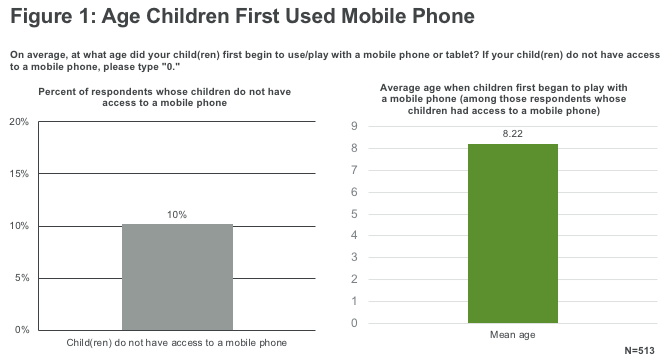My child isn’t allowed screen time. Is yours?
OK, so my son is only eight months old (next week). And I’m new enough to parenting to still be an idealist. If you asked, I’d tell you he won’t have any screen time (with the exception of FaceTime) until he is 18 months old – and limited access after that. Oh, and maybe most naive of all, he will not have a personal cell phone until he’s of driving age.
The truth is, as landlines disappear and more schools hand out tablets instead of textbooks, I may be forced to become a parent that allows – and monitors – increased screen time. An article by GeekWire says that, according to a Futuresource Consulting report, in the first quarter of 2018, shipments of tablets and laptop computers to U.S. K-12 schools were up 10 percent year-over-year.
Brands will always be interested in the guidelines parents set for their children around screen time. What types of behaviors are parents striving for? What does screen time actually look like in practice? How can Brand A appropriately market Product X to the current generation of parents? These are questions many brands are asking – particularly as tech-savvy Millennials continue to become parents.
To learn more about screen time and kids, MaritzCX conducted research among parents regarding cell phone, tablet and TV use.* I’m presenting some of the finding with limited commentary, leaving it to the experienced eyes of my readers to glean insight.
A look at screen time
According to the study, eight years is the average age for a child to begin playing with/using a mobile phone (Figure 1). The average age a respondent purchased a mobile phone for their youngest child was just under 11 (Figure 2).


I was most surprised to see that 46 percent of respondents selected, “I don’t regulate phone usage; they have access to it all the time” when asked how they regulate the amount of time their child is on their cell phone (Figure 3).

According to a Pew Research study, 77 percent of Americans go online on a daily basis, with 26 percent reporting that they are online “almost constantly.” So it shouldn’t come as a surprise that our children are also spending large chunks of time with a screen. MaritzCX’s survey looked at how much screen time the respondents’ youngest children are exposed to each day (Figure 4). It’s interesting to see the difference between the screen types.

Here’s a quick roundup of some of the study findings:
- Thirty-seven percent of parents said TV exposure in their youngest children averaged one-to-two hours a day with a quarter saying cell phone use averaged more than two hours a day.
- Seventy-one percent of respondents have used tracking apps to track their children.
- When asked if they regret buying their youngest child a phone when they did, 64 percent of respondents said no.
- The top concern of parents with children having a phone was inappropriate content (e.g., photos, text exchanges, pornography, etc.) at 25 percent.
- Respondents averaged 2.25 smartphones (approximate number) per household.
- The top reason respondents initially got their youngest child a phone was for emergency use (40 percent) followed by to easily stay in touch with them (39 percent).
- Seventy-eight percent of respondents said their children do not contribute financially for the phone they use.
Looking to the future
I am optimistic screen time will be limited at my house. After logging eight hours on my work computer five days a week, I prefer to spend some time playing with my son screen-free. Someday, educational screen time will likely disrupt our status quo.
I’m interested in seeing how these numbers change as younger Millennials – and ultimately Gen Zers – become parents.
*The online survey of 516 respondents was commissioned by MaritzCX from the Research Now Valued Opinions panel from May 10-14, 2018. The study was fielded among parents, so all respondents had at least one child. Forty-two percent of respondents identified as male; 58 percent identified as female. Age breakdown of respondents was as follows: 10 percent ages 18-24; 13 percent ages 25-34; 28 percent ages 35-44; 26 percent ages 45-54; and 32 percent ages 55+.
